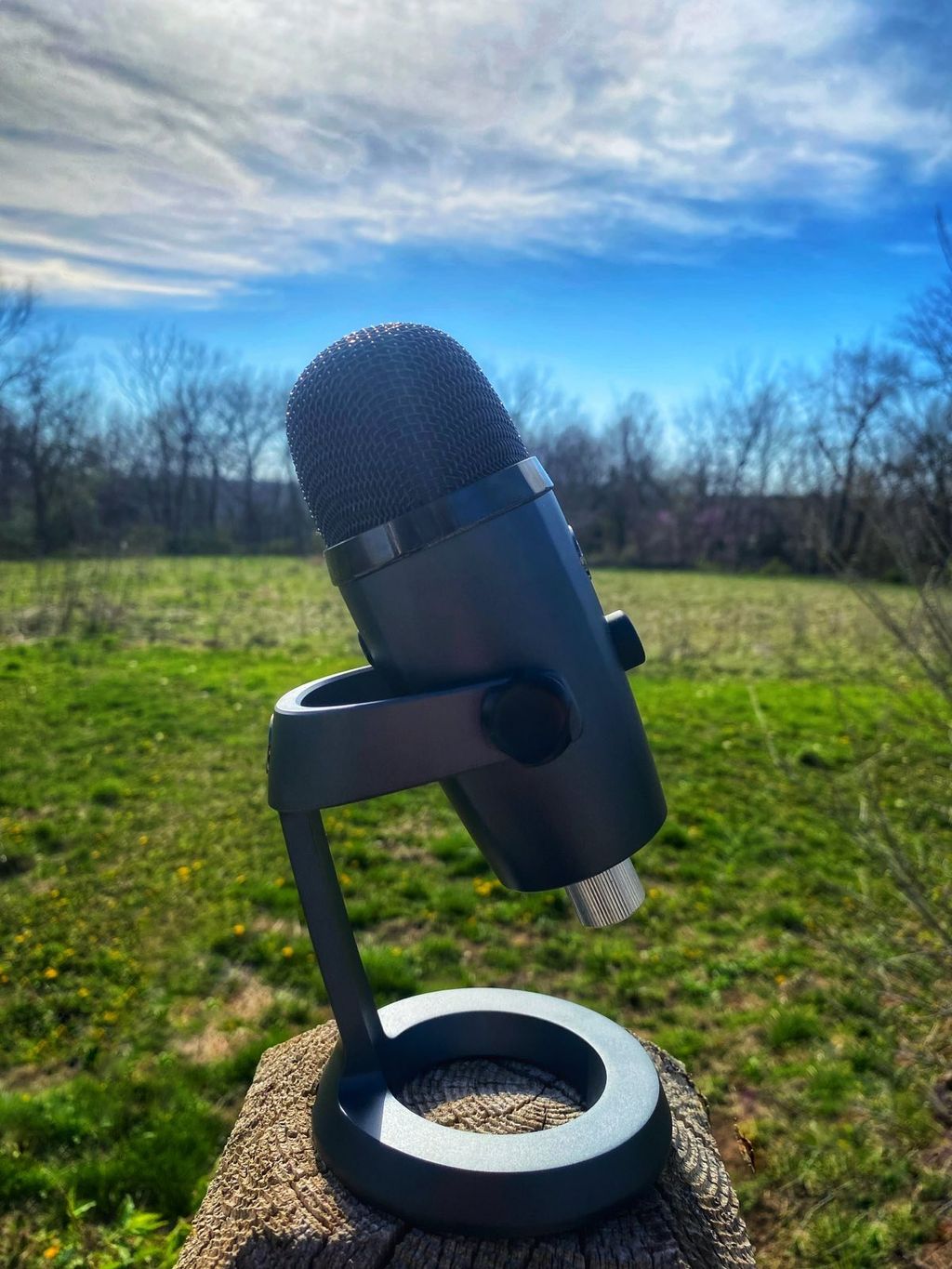For many trans masculine people, having a deeper voice can be an essential aspect of transition and personal identity. A more resonant voice can instill confidence and comfort in your gender presentation, create smoother social interactions, and reduce the likelihood of misgendering. In this guide we explore the biomechanics of voice production and deepening, provide vocal exercises to try, and otherwise masculinize your speech patterns.
How Does the Body Make Sound?
Voice production involves the interaction of several physiological components, including the vocal folds and the resonance chambers within the body. There are three primary resonance chambers: R1 (the area inside the neck), R2 (the area inside the mouth), and R3 (the area between the tip of the tongue and the teeth)1. The size and shape of these chambers can be manipulated to change the resonance and pitch of the voice, which is the basis for many voice training exercises.
Age-Related Voice Deepening
Voice pitch tends to lower with age in all people regardless of sex, due to changes in the larynx and vocal fold structure2. However, the extent of voice deepening through aging alone may not be sufficient to achieve the desired masculine vocal characteristics for trans men.
Testosterone & Voice Changes
Testosterone causes the vocal folds in the larynx (Chamber R1) to grow thicker and longer, which results in a lower fundamental frequency, or pitch3. Research has shown that testosterone therapy can deepen the voice in transgender men, with similar physiological effects on the vocal folds. However, the degree of voice deepening varies between individuals and may depend on factors such as genetics and the age at which they start testosterone therapy.
Realistic Expectations
Voice deepening through training can be effective, but it is important to have realistic expectations. Some folks may experience significant deepening, while others may notice more subtle changes. These exercises can help you gain better control over your vocal pitch, resonance, and speech patterns. Results may take time and consistent practice to achieve.
Measuring Progress
Let’s see where you are. Go to one of the following voice analyzing apps:
- Android – Voice Pitch Analyzer in Google Play.
- iPhone – Vanido in the app store.
- Desktop – Singing Carrots on a web browser.
Once you have downloaded or gone to one of these sites, complete the test. You will get to see your high and low range and how that compares to the human vocal range.
Voice Training Exercises
We can deepen the voice by focusing on the manipulation of the resonance chambers in the body, particularly the R1 chamber (the area inside the neck) and the R2 chamber (the area inside the mouth). By adjusting the size and shape of these resonance chambers, you can control the pitch and resonance of your voice, making it deeper or higher as desired. Let’s start with an exercise to understand how the difference in sizes of these chambers will impact the sound produced.
HAA and HEE Exercise
The Seattle Voice Lab1 recommends the “Haa and Hee” exercise. The exercise is designed to help you understand and feel the impact of changing the size and shape of your resonance chambers on the sound produced. Follow below to perform the exercise and feel its effects on the chambers:
- Haa: To begin, drop your jaw low, allowing your tongue to fall to the bottom of your mouth, as if you were at the dentist. Inhale on the sound “HAA.” It will sound more like “ahh,” but have your tongue in the “HAA” position. When you do that, you expand the area inside your mouth, allowing more sound to fill it.
- Hee: Next, bring your jaw up into a slight smile, with your teeth almost touching, and raise your tongue towards the roof of your mouth. Inhale on the sound “HEEE.” In this position, you are constricting the open space inside the R2 chamber (the mouth). The constriction produces a higher, sharper, and more typically feminine sound.
- Practice: Go back and forth between the “HAA” and “HEE” positions a few times, paying attention to the change in pitch and quality of the sound produced.
This exercise targets the R2 chamber (the mouth) and demonstrates how altering the position of the jaw and tongue can change the resonance and pitch of the voice. By practicing these sounds, you can develop better control over the size of their resonance chambers and work towards achieving a deeper voice.
Where have I heard this before?

Breathing for Depth Exercise
Breathing from your diaphragm instead of taking shallow breaths can also help deepen your voice by giving you plenty of air to use. Take a sip of water and let’s do the next exercise.
- Sit or stand straight and inhale through your nose. Feel your stomach expand as you inhale through your nose. Exhale from your mouth. Take a few deep breaths. Relax your throat.
- Then, exhale while making a “haa” sound, maintaining controlled and steady airflow. Repeat this process, but this time make a “hee” sound. This exercise will help you focus on your diaphragm, which can deepen your voice and improve projection when speaking or singing.
When you breathe from your diaphragm, you engage your abdominal muscles, allowing for a more stable and consistent airflow through your vocal cords4. This controlled airflow helps the vocal cords vibrate more efficiently and at a lower pitch, resulting in a deeper voice. Additionally, diaphragmatic breathing encourages you to use your chest resonance, which amplifies the lower frequencies of your voice, enhancing the depth and richness of the sound.
Resonance Exercise
Resonance exercises focus on expanding the R1 chamber (the area inside the neck), which can help deepen the voice by lowering the larynx and producing a more rounded, masculine tone. Practice “yawning” and maintaining the expanded throat position while speaking1.
Humming & Pitch Slides
Humming is a simple yet effective exercise for practicing vocal control and resonance. Hum at different pitches and focus on the vibrations in your chest, throat, and face. You can become better at controlling your resonance and pitch.
Similarly, for pitch slides start at a comfortable pitch and then slide the voice up and down in pitch, like a siren. By practicing you can develop greater flexibility and control over your vocal range.
Socialization & Intonation
Females are often socialized to speak at a higher pitch and with different socially acceptable speaking patterns than males5. This can include varying pitch more frequently, using more upspeak (rising pitch at the end of statements), and using more vocal fry (a creaky, low-pitched sound). Trans men may need to work on altering these patterns to achieve a more masculine-sounding voice. Exercises focusing on maintaining a more consistent pitch, minimizing upspeak, and reducing vocal fry can be helpful in addressing these intonation changes.
Deepening the Singing Voice
To deepen the singing voice, focus on the same principles of resonance and pitch control as in the speaking voice exercises. Practice humming, resonance exercises, and pitch slides while singing to achieve a lower, richer tone. Studying classic songs in various male vocal ranges (tenor, baritone, bass) can help adapt your singing voice to different styles and pitches.
If you want to try to sing along with other male singers in various ranges, here are our (indie pop leaning) recommendations:
- High male range (Tenor):
- From Fire by Perta
- Feels Like We Only Go Backwards by Tame Impala
- Mid-high male range (High Baritone):
- 1901 by Phoenix
- Bittersweet Symphony by The Verve
- Middle male range (Baritone):
- Little Talks by Of Monsters and Men
- Budapest by George Ezra
- Low male range (Bass-Baritone):
- Lonely Boy by The Black Keys
- Hannah Hunt by Vampire Weekend
- Lowest male range (Bass):
- Lost Day by Other Lives
- This is the Last Time by The National
Tweet us and tell us what songs bring you joy to sing!
Voice Therapists
Voice Therapists are trained professionals that provide personalized guidance and support for trans men seeking to deepen their voices, address intonation changes, and work on other aspects of vocal masculinization. The cost of voice therapy varies depending on factors such as location, therapist experience, and session frequency. Prices can range from $75 to $200 per session. Some therapists may offer sliding scale fees or insurance coverage.
Here are some therapists we found:
- The New York Speech and Voice Lab: The New York Speech and Voice Lab, run by a certified speech-language pathologist, offers voice training services tailored to transgender clients. They provide in-person and remote voice therapy sessions, as well as a variety of resources on voice modification.
- VocalKey Speech and Voice Therapy: VocalKey Speech and Voice Therapy offers voice training services for transgender clients, with a focus on helping individuals achieve a more authentic and comfortable voice. They provide in-person and remote therapy sessions, as well as resources on voice modification.
- The Mayo Clinic: A reputable source for all types of medical questions.
Additional Resources
Here are links to more in-depth resources that may be helpful to you:
- Trans Voice Lessons YouTube Channel: This YouTube channel, run by a professional voice teacher, offers voice training videos specifically designed for transgender individuals. The channel features tutorials, exercises, and tips on voice deepening and feminization.
- Voice Science Works: Voice Science Works is a website dedicated to providing evidence-based information about voice training, vocal health, and voice modification. They offer resources, articles, and tips on various aspects of voice training, including voice deepening.
- The Voice Book for Trans and Nonbinary People: This book by Matthew Mills and Gillie Stoneham provides a comprehensive guide to voice modification for trans and nonbinary individuals. It includes practical exercises and advice on voice deepening, feminization, and other aspects of voice work.
These resources offer a range of information and guidance for individuals looking to deepen their voice, with some specifically tailored to the transgender and nonbinary community.
Our Final Tips
- Practice Consistently: Like any skill, voice training requires consistent practice to see results. Dedicate a few times a week to work on these exercises and techniques. As with any activity, it’s also important to take time for rest.
- Stay Hydrated: Hydration is essential for maintaining vocal health and ensuring optimal voice production. Drinking plenty of water each day can help prevent vocal strain and promote a smoother, more resonant voice.
- Warm Up: Warming up your voice before practicing or performing can help prevent vocal strain and injury. Try gentle humming, lip trills, or other light vocal exercises to prepare your voice for more intensive work.
- Seek Support: Connecting with others in the trans masculine community who are working on voice deepening can provide valuable support, encouragement, and advice. Online forums, social media groups, or local support groups can be great resources for connecting with others on a similar journey. Come hang out with us at r/FTM or r/FTMMen. There’s also a specific reddit r/transvoice.
Now get out there and share your voice with the world!

Sources
- https://www.seattlevoicelab.com/how-to-do-voice-masculinization-therapy/
- Harrington, Jonathan & Palethorpe, Sallyanne & Watson, Catherine. (2007). Age-related changes in fundamental frequency and formants: A longitudinal study of four speakers. Proceedings of the Annual Conference of the International Speech Communication Association, INTERSPEECH. 2. 2753-2756. 10.21437/Interspeech.2007-716. Available here.
- Oates, J., & Dacakis, G. (2015). Voice and communication change for gender nonconforming individuals: Giving Voice to the Person Inside.
- https://www.worldcat.org/title/principles-of-voice-production/oclc/974379588
- Levon, E. (2014). Categories, stereotypes, and the linguistic perception of gender. Language in Society, 43(5), 539-566.
